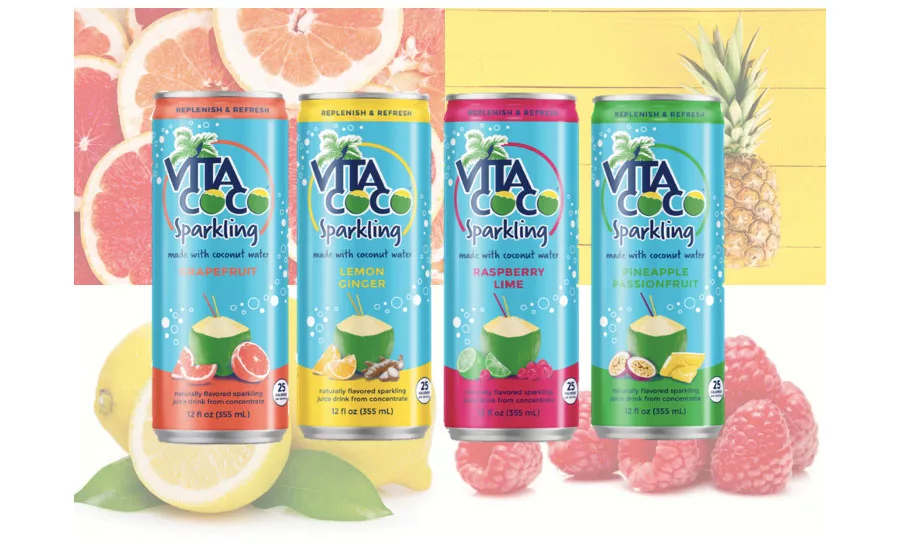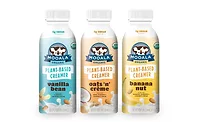Plant-water category gets creative
Hybrid beverages becoming a new trend

In American sports, the term “three-peat” refers to winning three consecutive championships. In the beverage world, the bottled water category achieved its “three-peat” by remaining the No. 1 packaged beverage in the United States by volume, according to the Alexandria, Va.-based International Bottled Water Association (IBWA).
Recent statistics from New York-based Beverage Marketing Corporation (BMC) show that 69 percent of the growth in bottled water consumption stems from people shifting away from carbonated soft drinks (CSDs) and fruit drinks, said IBWA in a May press release.
As consumers are shifting away from sugary alternatives, they are beginning to venture into the land of plant waters, experts say.
“Many consumers want beverage options that are hydrating and taste good, but are healthier than traditional CSDs or juices with high-sugar content,” says Holly McHugh, marketing associate at Imbibe, Niles, Ill. “Plant waters tend to be high in electrolytes and various vitamins and minerals depending on the source and since they come from plants, the perception is that they are all natural and better for you.”
Gary Hemphill, managing director of research at BMC, echoes similar sentiments on the trend toward healthier refreshment and plant waters in particular. “Consumers want healthier refreshment and marketers are working to find the right products that resonate with people,” he says. “Plant waters provide a natural refreshment alternative with some distinct wellness benefits.
“Coconut is the best example of success in the plant water universe, in part due to people’s familiarity with it, along with its positioning as a natural sports drink,” he continues. “Watermelon has made some inroads based on taste and refreshment value. Aloe vera has shown some promise with its reputation for improving people’s skin.”
The market at a glance
Although coconut waters commands the lion’s share of the plant-water market, there has been a profusion of other plant-based waters in ready-to-drink (RTD) formats, including aloe vera, cactus, maple and birch trees, says BMC in its March report titled “Plant-Based Beverages in the U.S.” They boast different nutritional profiles than coconut water, often-shorter supply lines and sometimes a flavor that is more constant with Middle-American palates, the report adds.
In 2018, coconut water volume decreased by 2.8 percent to 39.8 million gallons, but still accounted for 88.6 percent of total plant-based beverage consumption, according to BMC data. On the other hand, plant waters (all formats excluding coconut water) increased 27.5 percent to 5.1 million gallons, accounting for 11.4 percent of total plant-based beverage consumption.
The leading plant-based beverage brand by volume is New York-based Vita Coco, which in 2018, saw an estimated sales volume of 19.2 million gallons, BMC’s report states. The No. 2 brand — Zico — owned by Atlanta-based The Coca-Cola Co., saw a 2018 sales estimate of 5.5 million gallons, However, both brands experienced sales decreases, with Vita Coco and Zico experiencing volume decreases of 1.2 percent and 18.3 percent, respectively, over the prior-year, based on BMC data.
While Vita Coco and Zico comprise a large portion of the plant-based beverage category, two aloe water brands — OKF and alo — found their way into the Top 10, commanding 3.3 and 3.1 percent, respectively, of wholesale dollar sales in 2018, BMC’s report says.
Hybrid hydration
One trend occurring in the plant waters’ category is what many industry experts are calling hybrid beverages. “Consumers are looking for plant-based alternatives across most food and beverage categories, in most cases driven by a desire for healthier sources of protein or to suit vegan, vegetarian and flexitarian diets,” states Rockville, Md.-based Packaged Facts “U.S. Beverage Market Outlook 2019” report.
Water producers have been blurring boundaries between juice and water by infusing their products with different plants, fruits and vegetables, the report explains. “Coconut water has been very successful and some marketers are trying to replicate that success by tapping into trees for water,” it says. “Maple and birch sap are yielding water that is being packaged and marketed by a growing number of companies.”
Imbibe’s McHugh also highlights the emerging hybrid beverage trend. “Plant waters are being incorporated into other beverage types as a component of a hybrid,” she notes. “The most common is coconut water with fruit juice, but it’s also been used in combination with coffee and protein drinks. Incorporating coconut water in these types of beverages gives the perception that these products deliver more health benefits.”
Plant water brands are finding new ways to compete in the market. For example, brands are adding bubbles to create textural complexity and give consumers another better-for-you alternative to traditional CSDs, McHugh says. Unlike regular sparkling waters, plant waters naturally are high in vitamins and minerals, which adds to their appeal, she adds.
Going forward, as consumers continuously become aware of the benefits of healthy and natural beverages, the drive for plant-based waters only will increase, BMC’s Hemphill says. BI
Looking for a reprint of this article?
From high-res PDFs to custom plaques, order your copy today!






